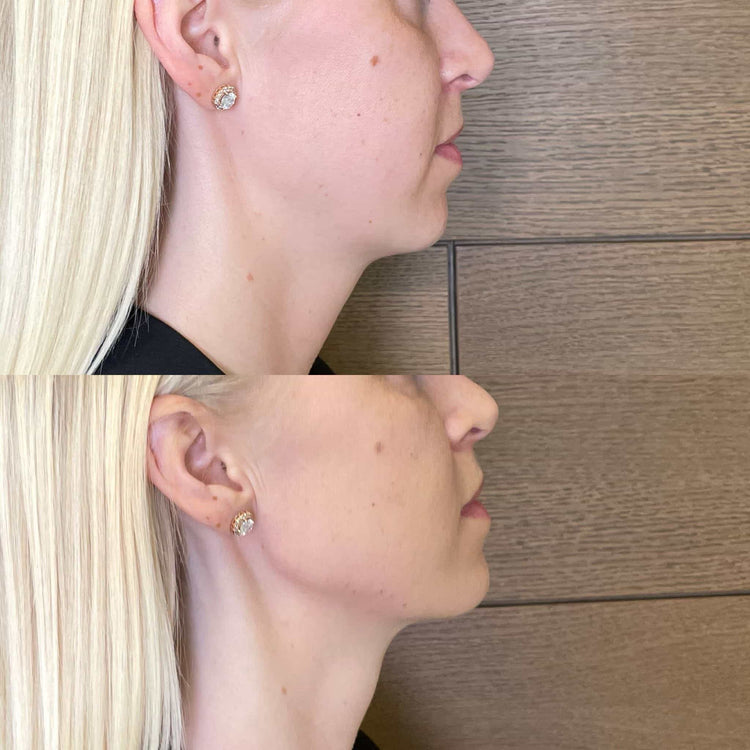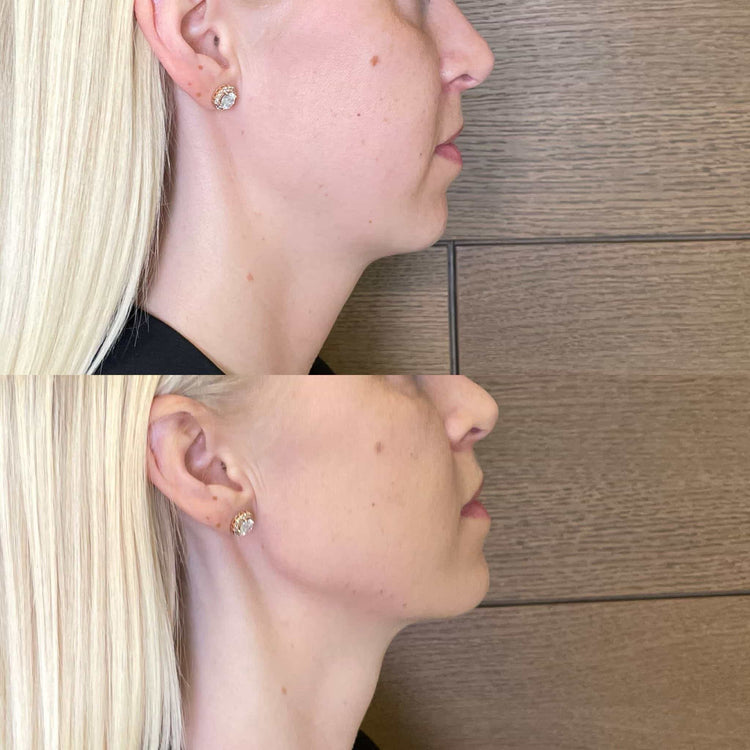Are Jaw Fillers Reversible For London Clients
May 1, 2025
Types of Jaw Fillers
In pursuit of sculpted facial contours, many London residents turn to jaw fillers as a non-surgical solution. These injectable substances, typically composed of hyaluronic acid, are strategically placed beneath the skin to enhance jawline definition and create a more prominent appearance. A range of fillers exist, each with unique properties, ensuring tailored results based on individual needs and desired outcomes.
Hyaluronic Acid Based Fillers
Hyaluronic acid-based fillers dominate the market for jaw augmentation due to their biocompatibility, natural occurrence in the body, and reversible nature. They effectively attract and retain water, adding volume and smoothing out irregularities. Different types of hyaluronic acid fillers cater to specific needs: some provide a temporary volumizing effect lasting 6-18 months, while others offer more long-lasting results.
These fillers are known for their versatility, allowing clinicians to sculpt the jawline precisely, emphasizing angles or subtly enhancing its natural contours. The choice of filler depends on the client’s desired outcome, skin type, and individual anatomy.
Poly-L-lactic Acid (PLLA) Fillers
While hyaluronic acid fillers are commonly used for jaw augmentation due to their reversibility, there’s another option gaining traction: Poly-L-lactic Acid (PLLA) fillers.
Unlike hyaluronic acid, PLLA is a synthetic biocompatible material that stimulates collagen production. It doesn’t add immediate volume but gradually builds it over several weeks, leading to a more natural and long-lasting enhancement.
PLLA jaw fillers provide gradual results that can last for up to two years or more. Because they stimulate the body’s own collagen, the effects are considered more permanent compared to hyaluronic acid fillers, although not completely irreversible.
Reversability of Jaw Fillers
The reversibility of jaw fillers is a crucial factor for many London clients considering this non-surgical procedure. Hyaluronic acid fillers, widely used for jaw augmentation due to their temporary nature and ability to be dissolved, offer the advantage of reversing unwanted results.
Hyaluronic Acid Fillers: Dissolving Treatment
Hyaluronic acid fillers can be reversed with a simple injection of an enzyme called hyaluronidase. This enzyme breaks down the hyaluronic acid, allowing the body to naturally absorb it over time.
The reversibility of hyaluronic acid fillers provides peace of mind for clients who may want to adjust their appearance or prefer a temporary enhancement.
PLLA Fillers: Limited Reversibility Options
PLLA fillers offer a longer-lasting solution compared to hyaluronic acid fillers, with results that can last up to two years or more. However, while PLLA stimulates collagen production and leads to more permanent enhancements, it is not entirely irreversible.
There are limited options for reversing PLLA filler effects. Dissolving PLLA completely is challenging due to its interaction with the body’s natural collagen production.
While hyaluronic acid fillers provide a reversible solution with hyaluronidase, clients seeking jaw augmentation with PLLA should carefully consider the longer-lasting nature of these fillers and understand that complete reversal may not be possible.
Procedure for Reversing Hyaluronic Acid Fillers
The reversibility of facial fillers is a significant consideration for many individuals in London exploring non-surgical aesthetic enhancements. Hyaluronic acid-based fillers, commonly used for jaw augmentation due to their temporary nature, can be reversed with an enzyme injection called hyaluronidase. This allows the body to naturally absorb the filler over time.
Consultation with a Qualified Practitioner
The procedure for reversing hyaluronic acid fillers involves a simple injection of an enzyme called hyaluronidase. Hyaluronidase breaks down the hyaluronic acid in the filler, allowing the body to naturally absorb it.
Consultation with a qualified practitioner is essential before considering any type of facial filler treatment. During the consultation, a practitioner will assess your individual needs, discuss your desired outcomes, and explain the risks and benefits associated with different types of fillers, including their reversibility.
Administering the Dissolving Agent (Hyaluronidase)
The procedure for reversing hyaluronic acid fillers involves injecting hyaluronidase, an enzyme that breaks down hyaluronic acid. This allows the body to naturally absorb the filler over time.
Aftercare Instructions and Expectations
The reversibility of hyaluronic acid jaw fillers offers peace of mind for clients in London seeking a temporary enhancement. Hyaluronidase, an enzyme, can be injected to break down the hyaluronic acid filler, allowing the body to naturally reabsorb it.
Aftercare instructions for reversed hyaluronic acid fillers are typically straightforward and include avoiding strenuous activity, excessive rubbing or massage of the treated area, and using cold compresses to minimize swelling.

Expected outcomes after hyaluronidase treatment for reversed jaw fillers involve gradual fading of the volume enhancement as the body reabsorbs the filler. Full results may take several weeks.
Cost of Reversing Jaw Fillers

For London residents considering jaw augmentation, the reversibility of fillers is a key factor. Hyaluronic acid-based fillers, widely used for this purpose, can be dissolved with an enzyme called hyaluronidase. This allows the body to naturally absorb the filler over time, effectively reversing the effects.
Factors Affecting Cost: Filler Type, Volume, Location, etc.
The cost of reversing jaw fillers varies depending on several factors. Filler type is a major consideration, as hyaluronic acid fillers are typically less expensive to reverse than PLLA fillers. Hyaluronidase, the enzyme used to dissolve hyaluronic acid, is generally more readily available and affordable.
The volume of filler injected also influences the cost. Larger volumes require a greater amount of hyaluronidase, leading to a higher overall cost. The location of the injection site can also play a role, with more complex or delicate areas potentially requiring more time and skill, resulting in a higher fee.
The practitioner’s experience and expertise also impact the cost. Highly experienced injectors with specialized skills may charge a premium for their services. It is recommended to consult with several qualified practitioners in London to obtain personalized quotes and compare pricing based on your specific needs and desired outcomes.
Approximate Price Range for Dissolving Hyaluronic Acid Fillers in London
In London, dissolving hyaluronic acid fillers typically costs between £200 and £500 per area treated. This price range can vary depending on factors like the volume of filler used, the practitioner’s experience, and the clinic’s location within the city.
Potential Risks and Side Effects of Filler Dissolution
Potential risks and side effects associated with filler dissolution include temporary swelling, redness, bruising, and tenderness at the injection site. These side effects are generally mild and resolve within a few days.
In rare cases, more serious complications can occur, such as infection or allergic reactions. It’s important to choose a qualified practitioner who follows sterile techniques to minimize these risks.
Another potential risk is incomplete dissolution of the filler. If not completely dissolved, the filler may persist and require further treatment.

It’s crucial to have realistic expectations about the outcome of filler dissolution. While it can effectively reverse the effects of hyaluronic acid fillers, complete restoration to the original appearance may not always be possible.
Alternatives to Filler Reversal
Hyaluronic acid-based fillers dominate the market for jaw augmentation due to their biocompatibility, natural occurrence in the body, and reversible nature. They effectively attract and retain water, adding volume and smoothing out irregularities.
- Temporary volumizing effect lasting 6-18 months
- Long-lasting results with some types of fillers
Poly-L-lactic Acid (PLLA) fillers offer a longer-lasting solution compared to hyaluronic acid fillers, with results that can last for up to two years or more. However, while PLLA stimulates collagen production and leads to more permanent enhancements, it is not entirely irreversible.
- Stimulates collagen production
- Gradual results over several weeks
- Results can last up to two years or more
Conclusion (Without Mentioning Intro)
The reversibility of jaw fillers is a crucial factor for many London clients considering this non-surgical procedure. Hyaluronic acid fillers, widely used for jaw augmentation due to their temporary nature and ability to be dissolved, offer the advantage of reversing unwanted results.
- Hyaluronic acid fillers can be reversed with hyaluronidase
- Temporary effects lasting 6-18 months
Get a sculpted and defined jawline with jaw fillers by Dr. Laura Geige at It’s Me & You Clinic
- Cosmelan Depigmentation Peel Near Bisley, Surrey - May 5, 2025
- Dermal Fillers Near Sidlow Bridge, Surrey - May 5, 2025
- Nasolabial Fold Fillers – Marionette Lines Near Churt, Surrey - May 5, 2025
